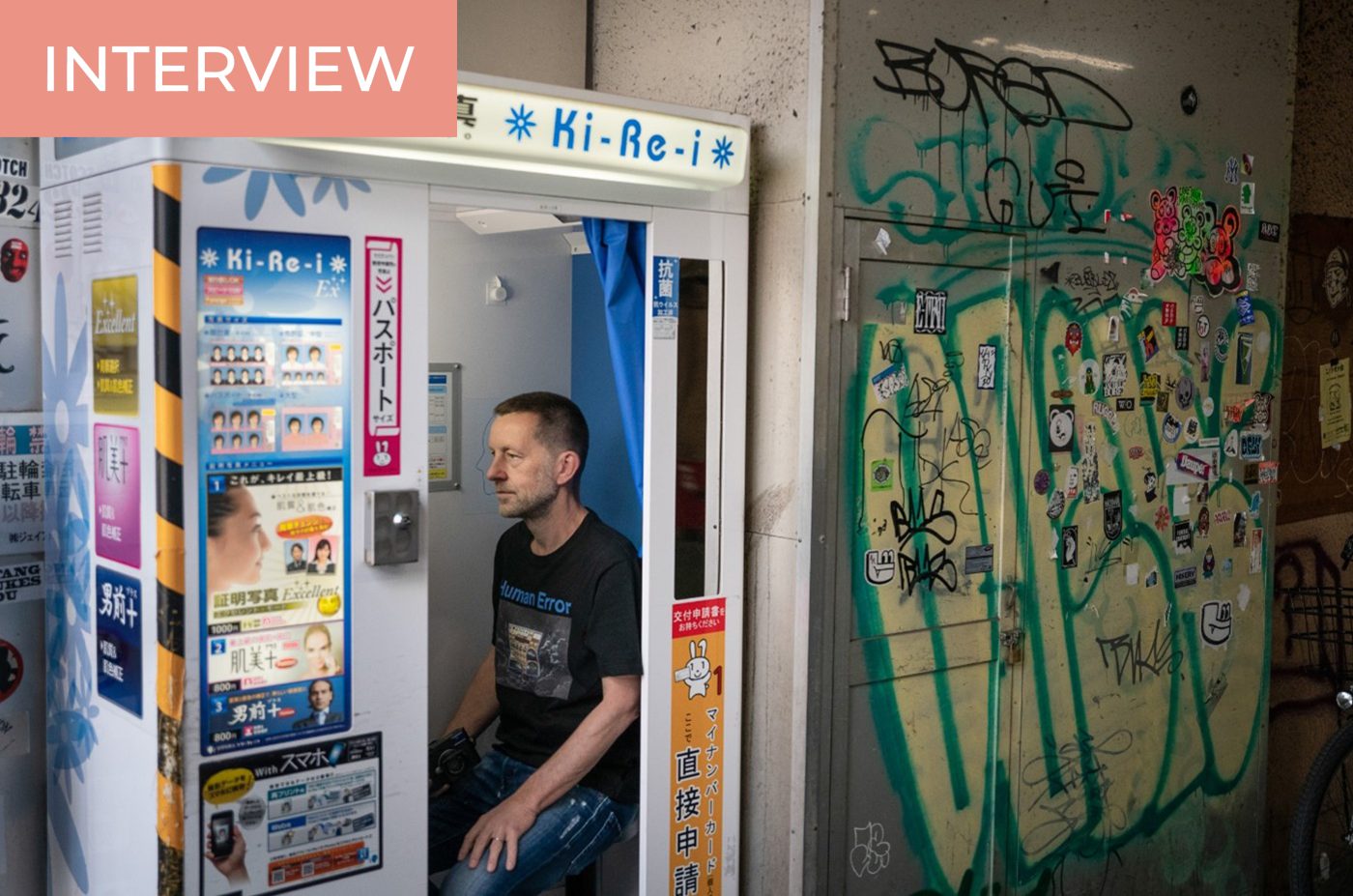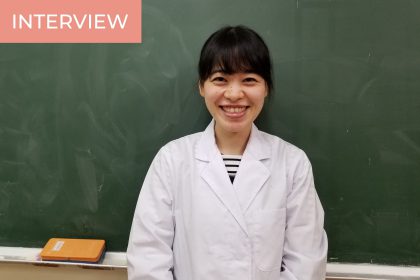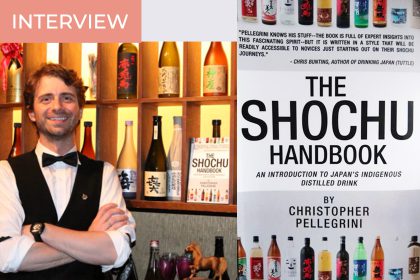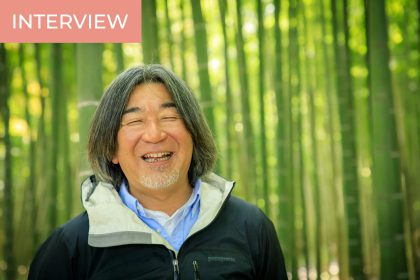Tokyo-based photographer Lee Chapman is no stranger to change. The Manchester, England, native came to Tokyo in 1998, and through his photography, he has been shedding light on the overlooked backstreets of the city ever since. With work featured in the Guardian, The Japan Times, and The Economist, just to name a few, Lee’s portfolio documents neighborhoods that exist in the shadows—places under the constant threat of Tokyo’s infinite cycle of urban renewal. Change may be inevitable, but Lee is on a mission to preserve his favorite aspects of the city, albeit in digital form.
As a photography enthusiast, I was delighted by the chance to chat with Lee about his experience as a veteran photographer, entrepreneur, and long-term Tokyo resident. Read on to learn:
- The thought process behind Lee’s photography
- How he launched his bespoke Photowalk tours
- Tips for becoming a better photographer
- Thoughts on how Japan has changed over the past two decades
Chasing an Ephemeral Tokyo
Photography is a popular profession and passion for expats in Japan. What do you feel makes your work unique?
Unless you purposely try to copy somebody else’s picture, I think everybody’s images are unique because each one of us is unique. We all see the world differently. I tend to focus on the older side of Tokyo which is not covered much. This gives me a certain niche. I also tend to photograph people—often older people. If I’m taking a picture of a person, that moment is unique, and it will never be repeated.
Your photos have attracted the attention of large media outlets. Why do you think they approached you instead of other photographers?
There aren’t many people photographing the older side of Tokyo. I’ve been doing this consistently for a long time. I think Western media is attracted to my work because it doesn’t fit with their image of Tokyo. If they are looking for something different, then some of my images work in that respect.
The photos on your website and social media channels often feature old or abandoned homes, bars, and stores in urban settings. What led you to focus on capturing these structures?
One reason is that they are disappearing. A building that’s here now can be gone by next week. That pace of change, especially in the last four or five years, has increased enormously. One reason I take pictures of these buildings is to document them. There are so many places that I didn’t take pictures of, and they are gone now. I’ll never be able to get that picture.
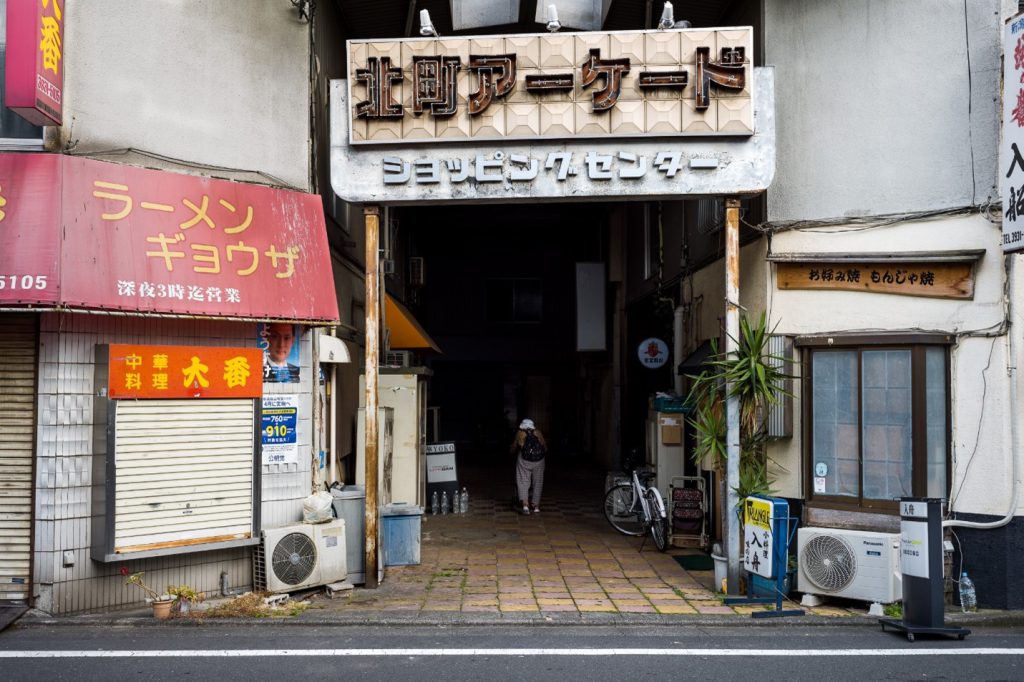
It’s not in the traditional sense, but I think there’s a real beauty in some of the decay. There are so many stories there. Even if it’s an old bar run by an old person, there’s a history attached to them or the customers that have been there. If it’s an empty building, there are stories that we will never know about, but we can imagine who lived there, how long they lived there, and what they did. It’s all contained in that one little bar or restaurant. I find it fascinating because everybody looks at a photograph differently, but there’s often an element of truth there. With those buildings, we know nothing. Everybody can truly see it differently and imagine their own stories.
How Photowalk Tours Came to Be
How did you come up with the idea to offer bespoke Photowalk Tours?
It’s just what I do. I choose an area, and I will take my camera and go out. Sometimes, I come back with nothing. Sometimes, I come back with shots I like or shots I don’t like. Eventually, I started taking local friends with me, and they enjoyed it. Then, I started doing the same for visitors. I mentioned these walks on my photoblog, and one reader—a freelance journalist—said, “I’m going to do an article on the kind of thing that you’re doing. If you make it official, then I’ll come on your walk.” So, I said that I’d make it official.
I made the webpage, she came over, and we did the Photowalk. It was AP [Associated Press], so the article was syndicated and appeared in The New York Times, the Los Angeles Times, and so on. When I started doing these tours, I had already spent the last 10 years learning all these areas [to take photos]. I knew them by heart. I had done all the groundwork, so once I started, I just made it bespoke. Before each tour, I typically have a conversation with a customer to see what they specifically want to see and photograph. I then give them two or three possibilities, and we take it from there. It’s very flexible, but I obviously focus on the older side of Tokyo.
An Unforgettable Image
What is the most impactful photograph that you have ever taken?
That’s a difficult question because photography is so subjective. I have sets of pictures that are more impactful because a set, over time, can tell more of a story. However, for a single image, I would probably choose this one [also featured below].
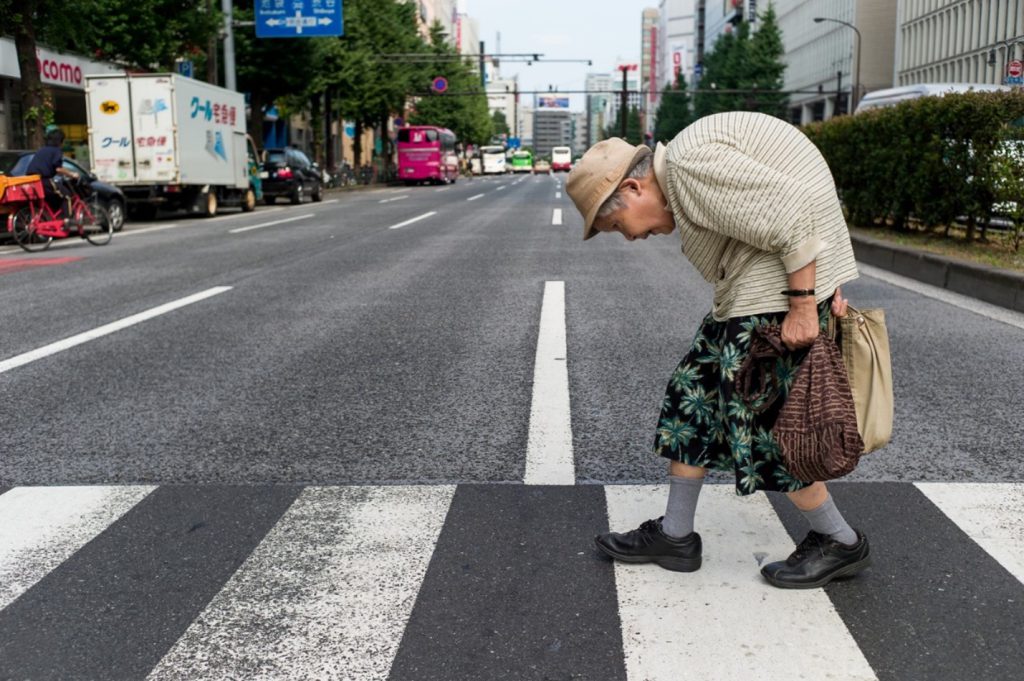
I’ve heard people talk about this, and people see it in such different ways. Some people see frailty. There’s a kind of illness there—brittle bones. There’s also a struggle. However, other people look at the image and see resilience, strength, and a never-give-up attitude. You can see the photo in two completely different ways.
Also, you’ve got an old lady in a modern city—the photo was taken in Shinjuku. She’s battling her way through the city. When she was young, the city was different than it is now. You’ve got the new and the old. She’s resilient, yet she’s fragile. This picture has all these elements to consider.
Tools and Techniques of the Trade
Although I’m not a photographer by trade, I take photography seriously and document my existence in Japan. So, I’d like to know: what is your favorite camera gear?
For years, I’ve almost exclusively used one camera and one lens: the Leica M with a 35 mm lens. Leica cameras are overpriced—don’t get me wrong. They are like Apple products. But as you can see, it’s a compact camera. It isn’t great for sports because it needs to be focused manually. But for street photography, it’s discreet—it gets out of the way very well. It’s so simple and pared down.
The shutter speed, ISO, and aperture all use intuitive, physical dials, so there’s no need to ever access the menu. The rangefinder focusing system is also easy once you get used to it. Plus, the ease of zone focusing makes everything even quicker. In the end, though it’s just a tool—a chunk of metal—but I thoroughly enjoy using it.
You mentioned a 35 mm lens, but I heard that 50 mm was ideal for street photography…
Back in the day, 50 mm was the go-to focal length for street photography. Cities are a lot busier now, so I think 35 mm is perfect for me in Tokyo. I can get pretty close to subjects—I can get a person pretty big in the frame. But I also like to capture a bit of context. I want more than just the person in the frame. I want a bit of their surrounding as well.
When I first started out, I had an SLR camera, and I was using longer lenses because I wasn’t comfortable photographing people up close. But this started to feel dishonest because I could be taking pictures and people would not be aware of what I was doing. Now that I use a 35 mm lens, it doesn’t disguise what I’m doing. I used to carry a lot of lenses with me, but I realized that most of the time, especially for street photography, I didn’t have time to stop and change lenses—I’d lose the scene. Also, while reviewing my images at home, I realized that most of the images I liked were 35 mm.
What advice do you have for those who want to take better photos in Japan?
First, you have to keep going out and taking pictures. There’s a constant learning curve. You can’t just look at gear, buy a camera, and become a decent photographer. You have to continually work on it. Just keep going and keep shooting. Review what you like, and what you didn’t like, and think about why you like or don’t like those photos. Then, take that on board when you go out the next time.
Also, you have to find something that you want to shoot—not what you think other people want to see. These days, there’s a real drive to take certain pictures just because they work well on Instagram. You need to practice, but you need to find a subject or a theme that you enjoy photographing. Fortunately, these two things work together. When you are interested in something, you’re going to take more pictures of it because you are eager to see it and experience it.
Do you have any additional Japan-specific photography tips?
If you want to photograph people, it’s easier here than in some other countries. Admittedly, I have gotten into some difficult situations, but I’ve rarely felt physically threatened. I think people here are generally more open to people with cameras. There’s not as much suspicion because I see a lot of Japanese people doing the same thing that I’m doing.
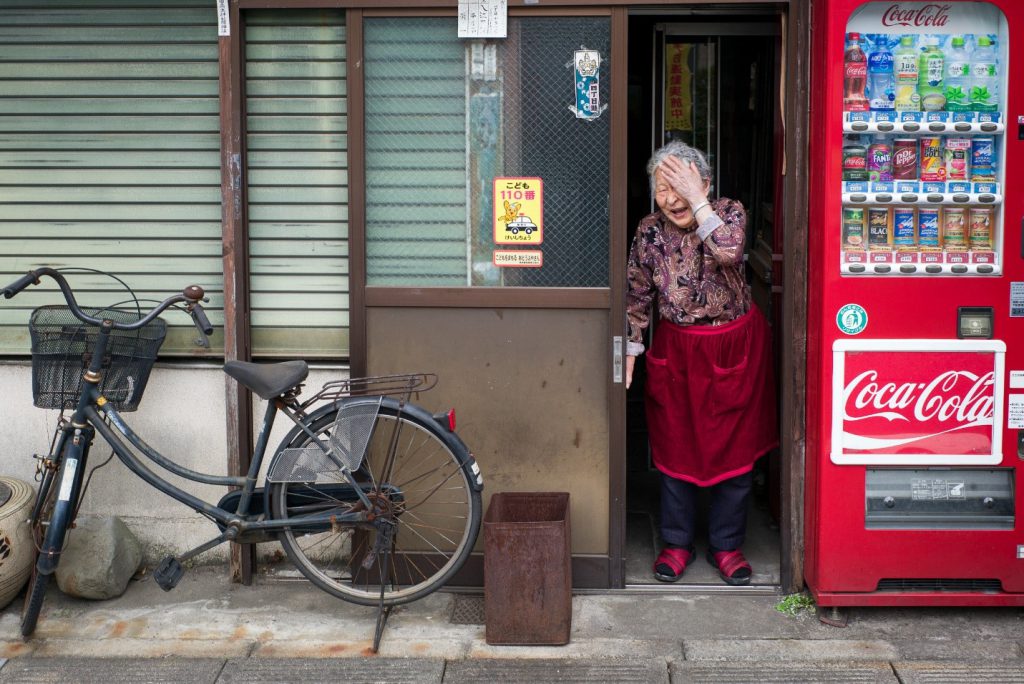
I recently wrote an article about how it may be more difficult to photograph people in Japan due to privacy laws. So, it’s interesting to hear another opinion on this.
Actually, there’s one other thing when it comes to taking pictures of people. The borders are closed now, but when tourism returns, as gaijin [foreigners/outsiders] with cameras, we obviously stand out and will be perceived as tourists. This gives us a little more leeway than we wouldn’t have if we were Japanese. Maybe this sounds like we’re taking advantage of the situation, but we have other disadvantages, so it all evens out. When I’ve been in difficult situations—when people have been upset that I’ve taken a picture—usually a smile and saying sumimasen [I’m sorry] diffuses the situation. I’ve had so many nice conversations after interactions that were initially a little fraught.
Final Thoughts: Capturing Change Over the Years
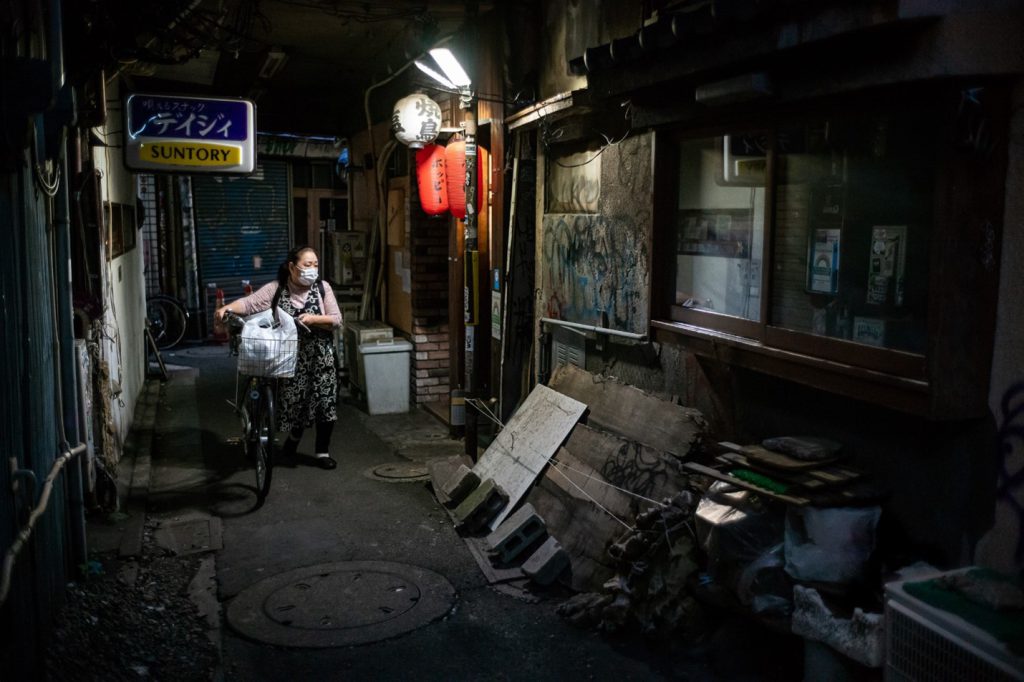
As someone who has been photographing Tokyo and other cities for over two decades, what changes have you noticed over the years?
Obviously, the city itself has changed because of what’s been knocked down and what’s replaced it. The other day, I was looking at some old pictures I took in Osaka. I was struck by how those images looked a lot older than that. I don’t know why. Maybe it was because of where I was shooting. Maybe it was the fact that there were no smartphones in the pictures. There were no masks either. They’ve always been present—just not to the extent we’ve seen in the past few years.
These, however, are purely visible changes. It’s probably fair to say that Tokyo undergoes such transformations quicker than most. Scratch beneath the surface, however, and for better or worse, the city—and indeed the country as a whole—has barely changed at all.

